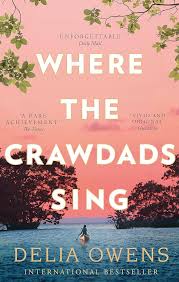50. The Journal
byThe Journal became a key focal point during Kya Clark’s trial in 1970, a moment that revealed not only the depth of her emotions but also the tensions between the world she had grown up in and the one she was now forced to face in the courtroom. As Kya nervously scanned the room, her eyes landed on familiar faces, particularly her brother Jodie, who, despite the grim circumstances, was present as a sign of familial support. This reunion, charged with unspoken emotions, symbolized the deep divide between Kya’s past—marked by isolation in the marshlands—and her present, where she was forced to confront accusations that had the potential to destroy everything she had known. The prosecution, eager to paint a portrait of Kya as a dangerous figure, called upon Patti Love Andrews, the mother of Chase Andrews, whose tragic death had set the entire town buzzing with gossip and judgment. Patti Love, coming from a world far removed from Kya’s own, testified about a rawhide necklace that had once belonged to her son, making it clear that this personal item, tied to Chase’s identity, was now central to the prosecution’s argument. Through this piece of evidence, the court was thrust into a discussion about the significance of objects and their role in defining people, forcing Kya to once again stand in judgment under the harsh eyes of a society that never fully understood her.
But it was when Kya’s own private, intimate possession—her journal—was presented that the trial truly veered into deeply personal territory. This journal, a carefully crafted collection of drawings, thoughts, and memories, revealed the side of Kya that had remained hidden from the world, offering a glimpse into her heart and mind. Through the journal’s pages, the courtroom was introduced to Kya’s emotional world, one that had always been intertwined with the beauty of the marsh, her connection with nature, and her complicated relationship with Chase. The journal had been Kya’s refuge—a safe space where she could express her innermost feelings, her longing for connection, and her love for Chase, all written down with raw honesty. However, this once-private sanctuary became a tool for the prosecution, who sought to use her emotions against her. The defense, meanwhile, found themselves grappling with the vulnerability that Kya’s journal exposed. What had once been a quiet part of her life, a personal refuge, was now laid bare for all to see, under the scrutiny of people who likely did not understand the significance of her actions or the purity of her feelings for Chase.
The courtroom scene deepened the thematic exploration of societal expectations, isolation, and the complexities of human relationships, particularly for someone like Kya who had spent most of her life outside of the social structures that governed the small town. The journal, which captured not just the innocence of Kya’s affection for Chase but also the quiet, steadfast love she felt for her surroundings, became a poignant symbol of everything that Kya had been denied. The act of presenting such personal content in a public trial served as an emotional expose, as her private thoughts and creative expressions became the subject of examination and judgment. As Kya sat quietly in the courtroom, bearing the weight of the prosecution’s scrutiny, she remained steadfast, her internal strength and resilience visible through her unflinching resolve. In contrast to the harshness of the trial, her journal revealed an alternative narrative—one that contrasted sharply with the prosecution’s attempts to paint her as a criminal. It was clear that the journal wasn’t just a record of Kya’s emotions, but a representation of her humanity, her vulnerability, and her capacity for love and connection, all of which had been dismissed or misunderstood by those around her for so long.
Despite the intrusiveness of the trial, Kya’s resilience and quiet defiance stood firm, showing that her connection to the natural world and her ability to love were not weaknesses but sources of strength. As the trial proceeded, it became evident that the courtroom drama was not just about uncovering the truth of Chase Andrews’ death but also about unearthing Kya’s past, examining the ways in which her isolation had shaped her. The deeper themes of belonging and prejudice emerged as Kya was forced to navigate a world that had long alienated her, both through her connection to nature and her position as an outsider. What the prosecution failed to see was that Kya’s feelings and her life were far more complex than the simple narrative they sought to impose upon her. The trial, and particularly the presentation of the journal, encapsulated the tension between the simplistic judgments of society and the complexity of Kya’s existence, highlighting how deeply rooted biases and misunderstandings could cloud the search for truth. Ultimately, it became clear that the real battle was not just about Kya’s innocence or guilt but about her struggle for acceptance in a world that had consistently rejected her.


